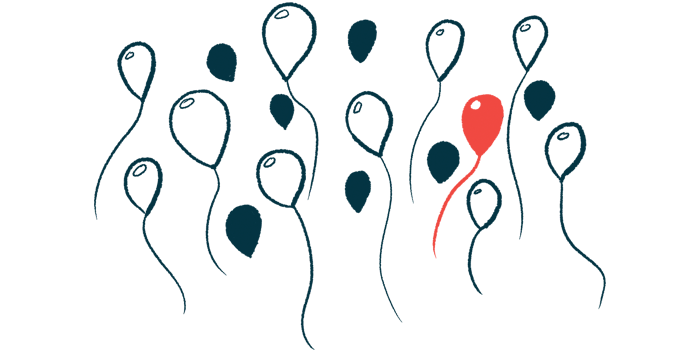Vitamin B6 normalizes Givlaari side effect in woman with AIP
Supplement helps patient with acute intermittent porphyria in case study

High levels of the amino acid homocysteine — a potentially harmful side effect of Givlaari (givosiran) — were successfully normalized by vitamin B6 supplementation in a woman with hard-to-treat acute intermittent porphyria (AIP), as described in a recent case report.
“Our results confirmed the importance of monitoring homocysteine metabolism and vitamin status in patients with acute intermittent porphyria in order to improve management by appropriate vitamin supplementation during [Givlaari] treatment,” the researchers wrote.
Details of the case were part of the study “Preventing hyperhomocysteinemia using vitamin B6 supplementation in Givosiran-treated acute intermittent porphyria: Highlights from a case report and brief literature review,” published in the journal Molecular Genetics and Metabolism Reports.
AIP is caused by mutations in the HMBS gene, which disrupt the production of heme, which is a molecule involved in oxygen transport. Such disruptions result in the toxic buildup of intermediary molecules, including 5-aminolevulinic acid (ALA) and porphobilinogen (PBG), driving disease symptoms.
Givlaari is a subcutaneous (under-the-skin) injection therapy marketed by Alnylam Pharmaceuticals and is approved in the U.S. for adults with acute hepatic porphyrias (AHP), a group of porphyrias that also includes AIP. It’s designed to suppress the production of aminolevulinic acid synthase 1 (ALAS1), a liver enzyme that’s overactive and causes ALA and PBG levels to rise in people with AHP.
Patients treated with Givlaari may have an increase in the levels of homocysteine in their bloodstream. Homocysteine is a type of amino acid, or protein building block. High levels of homocysteine have been associated with cardiovascular diseases.
Because vitamin B6 functions as an enzyme co-factor in the molecular cascade through which homocysteine is converted into other molecules, it is possible that vitamin B6 supplements may be used to lower homocysteine levels in AHP patients while on Givlaari.
A woman’s case report
In this report, researchers in France described how vitamin B6 successfully reduced dangerously high levels of Givlaari-induced homocysteine in a 72-year-old woman with hard-to-treat AIP.
The woman had a history of high blood pressure, epilepsy, and brain aneurysms. She was diagnosed with AIP at age 62, after having a severe acute attack with neurological involvement, which was successfully treated with hemin. Genetic analysis revealed the presence of an HMBS mutation.
In the eight years following her diagnosis, she had four relapses of acute neurovisceral attacks. Such attacks were marked by abdominal pain, brain and spinal cord involvement, chronic high blood pressure, and a more than tenfold increase in urine PBG levels. Infectious diseases were identified as triggering factors for two of those acute attacks.
Before starting Givlaari, she had persistently high levels of ALA and PBG in the urine and slightly impaired kidney function. Her homocysteine levels were also markedly elevated, at 79 micromoles per liter (mcmol/L), compared with the normal range of less than 16 mcmol/L.
After one month of treatment, Givlaari significantly reduced the levels of ALA and PBG in the urine. At the same time, however, her urine homocysteine levels had dramatically risen to 447 mcmol/L. Homocysteine was also found in the patient’s blood at a level of 69 mcmol/L, when it’s normally undetectable. Her blood vitamin B6 level was in the normal range.
Based on her urine ALA and PBG levels, Givlaari dosing was spaced about two to three months apart and given in combination with high-dose vitamin B6 (800 mg/day). Overall, she received 11 Givlaari injections over the course of 22 months (almost two years).
ALA levels in the urine remained low, while blood levels of homocysteine progressively returned to the normal range. PBG urine levels, however, remained relatively high, at around 10 to 30 times higher than normal, which had “already been described in patients whose treatment with [Givlaari] was initiated late in the disease course,” according to authors.
Despite the partial biological response, she has not experienced any new episodes of acute porphyria since starting Givlaari. Moreover, her blood homocysteine levels remained within a normal range over repeated Givlaari injections, even with a reduced vitamin B6 dose of 125 mg/day. Givlaari was also tolerated well, with injection site reactions observed.
“Subsequent studies on a larger number of patients are necessary to define more precisely vitamin B6 dosage which should be considered at treatment initiation and during long-term maintenance,” the researchers wrote.







